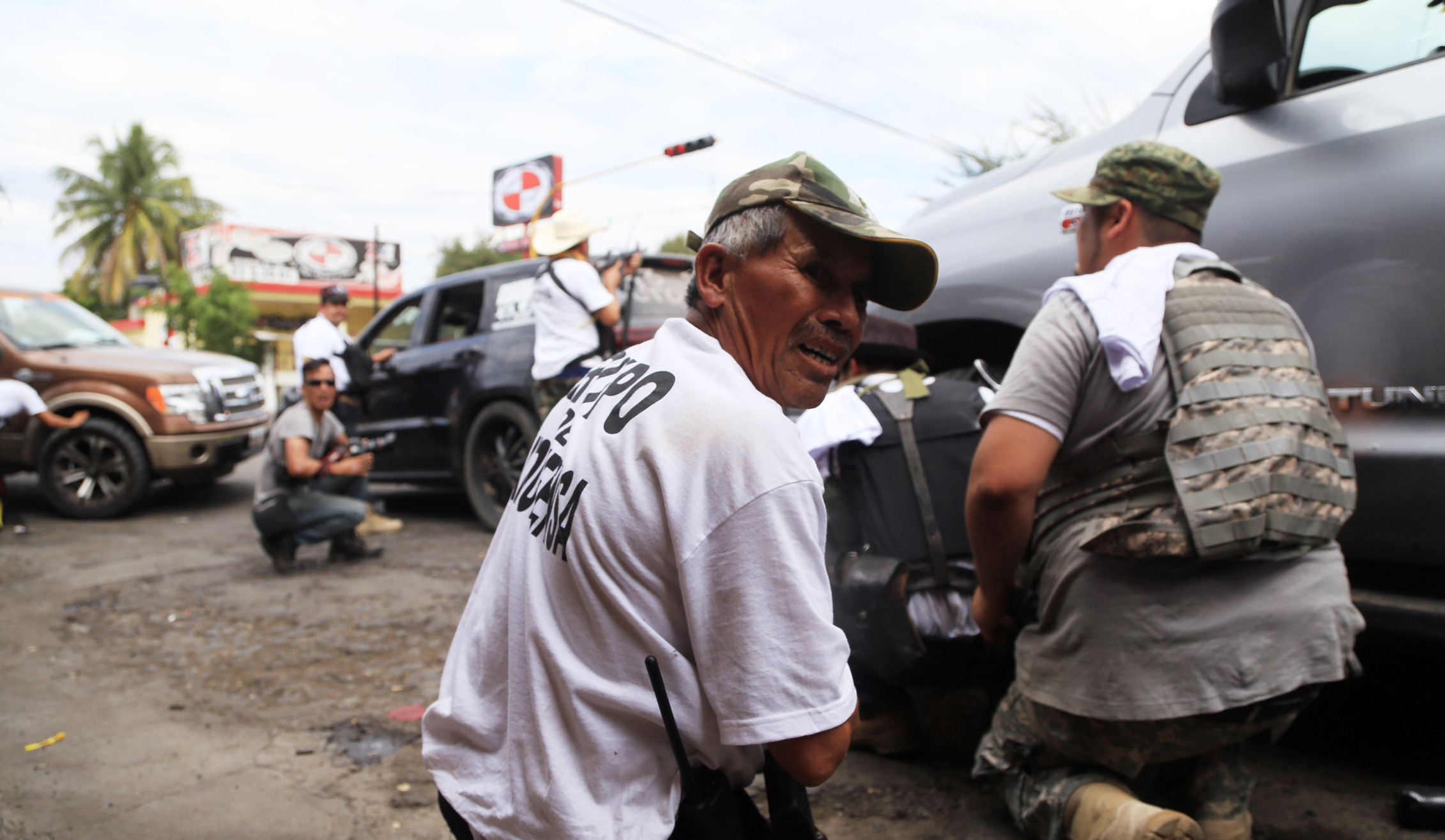It was in 2006 when former Mexican President Felipe Calderon first ordered the National Army to combat the drug cartels operating in Mexico, beginning the infamous “War against Drugs”. Seven years, over 80,000 deaths and about 6,000 reported cases of Human Rights abuses later, the conflict does not appear to be waning. In addition to the war between the Army and the cartels, clashes between different cartel groups have intensified. Furthermore, the astounding corruption throughout police ranks, as well as the cartels’ struggle to maintain their territorial markets, has placed rural residents in the worst position: it is common for them to become victims of extortions, kidnappings and robberies, among other abuses. Feeling that the government was incapable of offering them the security they needed, Mexican society was dominated by insecurity, fear and helplessness. That is, until various groups of citizens decided to take the issue in their own hands.
Civil vigilante units
In the past month, at least 14 new self-defense units have emerged in rural areas, particularly in the States of Michoacan, Veracruz and Jalisco. Considering that they have been active for several months now, the number of total units is likely to approach 100 at the very least. Seeing that the police and the government were either absent, corrupt or themselves working with the criminals, these self-defense units (which amount to 20,000 men, according to self-reports) have taken their AK-47 and R-15 rifles and have gone out to the streets. Their purpose is not to support the Army in its crusade against the cartels and stop drug trafficking, but rather to protect their families from local abuses. Most of these civil vigilantes work with masks and civil clothes, and so far their principal clashes have been against the Knights Templars and the Michoacan Family cartels. On February 8, the self-defense forces successfully entered Apatzingan, Michoacan, a town long-held by the Knights Templar cartel.
In light of the increasing presence of the self-defense forces in the war arena, and the extensive media coverage they received, current President Enrique Peña Nieto was pressured to officially recognize them. On January 28, the Mexican government signed an agreement with the self-defense units, legalizing them and arranging their integration into the quasi-military units called the Rural Defense Corps. According to the pact, their existence will be “temporary,” and each self-defense unit will submit a list of their members to the Defense Department. In regards to armament, the self-defense members will be allowed to keep their weapons as long as they register them with the Army.
Friends or foes?
The rise and legalization of these self-defense units has sparked fierce debates in different sectors of society in Mexico. For many, the upsurge of such self-defense units is a break-through of civil empowerment in the face of the abuses residents have had to endure since the war started. However, some politicians are concerned that the recognition of these groups would suggest an admission of state failure, while other analysts have expressed that their anxiety relates more to the murky records of vigilante groups in Latin American history.
Supporters of the self-defense forces often argue that their guerrilla tactics have proven to be extremely effective in combating corruption and drug cartels. The fact that they know the local terrain better than the Army, and that they have de-facto legitimacy in their towns, gives them a clear advantage in confrontations. Moreover, if handled correctly, Peña Nieto could even use these units to assuage the civil apathy towards the war and dredge up some support. In this aspect, supporters’ interests depend principally on whether or not the self-defense groups will receive a salary for their services. This topic should not be overlooked, for it will make the difference regarding the members’ commitment and loyalty to the movement.
However, several alarming concerns regarding the civil vigilante forces remain. For instance, history calls for caution. Bearing in mind that the United Self-Defense Forces of Colombia progressively stopped fighting the FARC and became another violent cartel, it is understandable that analysts are wary of the Mexican counterparts’ intentions. For those who believe that Colombia does not necessarily exemplify Mexico’s future, it is enough to recall that the Familia Michoacana cartel also claimed to be fighting the Zetas cartel… before joining drug trafficking itself.
Moreover, there are disturbing questions regarding the sources of the self-defense forces’ weapons. Reports indicate that the high-range assault rifles that many members have been carrying can only be accessed through drug cartels. To put it nicely, it would be an unfortunate move for Peña Nieto’s government to stimulate arms-trade relationships between civilians and the cartels. Thus, Peña’s administration should definitely research these risks thoroughly to avoid tightening a noose around their necks.
The war must go on (?)
As of today, the self-defense forces continue battling in Tierra Caliente, Michoacan, and other States of Mexico. Even though they have achieved some impressive progress in the past weeks, the units remain to be a wild card for Mexico. While Peña Nieto has been wise to keep a friendly relationship with them, he obviously cannot rely on them for the war or to maintain public support. If he continues with the war (which, shockingly, has not been reconsidered in the first place) he will have to deliver the 10,000 elite forces promised in 2013. Regarding the civil vigilante groups, his administration now has the responsibility of ensuring that they remain defense-oriented only, that they do not become yet another criminal organization and that their presence remains, in fact, temporary.
